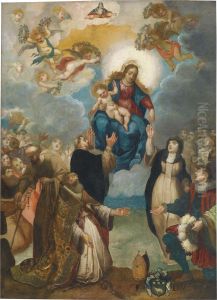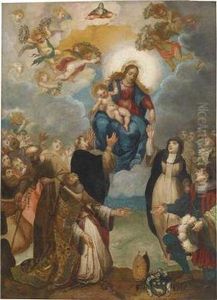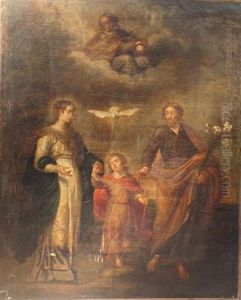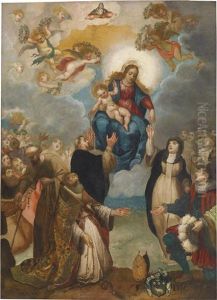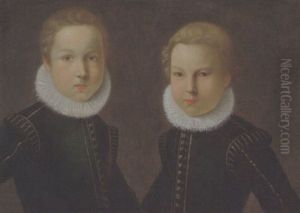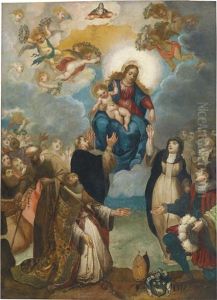Giulio Cesare Angeli Paintings
Giulio Cesare Angeli, also known as Giulio Cesare d'Angeli or simply Giulio Cesare, was an Italian painter born in 1570, primarily known for his work during the late Renaissance and early Baroque periods. His contributions to art history are less well-documented than those of his more famous contemporaries, which means that specific details about his life and works are relatively scarce. Despite this, he is recognized for his role in the artistic developments of his time, primarily in the region of northern Italy.
Angeli's work was influenced by the transition from the Mannerist style, which was characterized by artificiality and elegance, to the more naturalistic approach of the Baroque. His paintings often included religious themes, which was typical of the period, as the Counter-Reformation spurred on the demand for church art that was emotionally engaging and designed to inspire the faithful. Angeli's style would have involved a strong emphasis on light and shadow to create a sense of depth and drama, as well as a focus on realism and attention to detail that became increasingly prominent in the Baroque era.
Despite the lack of extensive records, it is likely that Angeli received his training from artists of the time who were steeped in the traditions of Renaissance painting but were beginning to experiment with the new Baroque sensibilities. He would have been part of the artistic milieu that included the likes of Caravaggio, whose revolutionary use of chiaroscuro and dramatic realism had a profound influence on his contemporaries and successors.
Angeli's career would have seen him working on various commissions for religious institutions as well as private patrons. However, specific works attributed to him are difficult to identify with certainty due to the commonality of his name and the practice of the time where many artists worked together in workshops, often without clear individual attribution. Giulio Cesare Angeli passed away in 1630, leaving behind a legacy that, while not as celebrated as some of his peers, contributed to the rich tapestry of Italian art history during a pivotal era of stylistic evolution.
